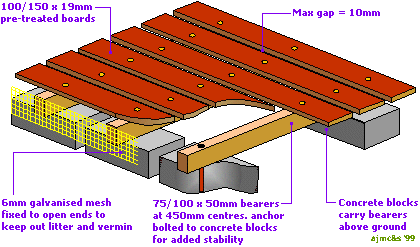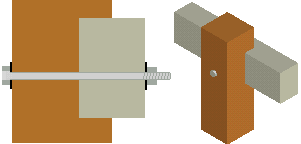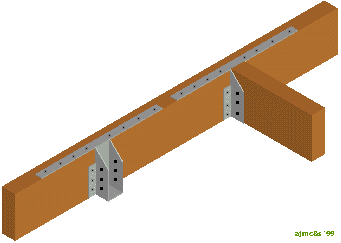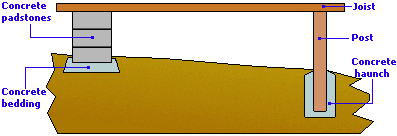| Basically, a deck consists of boards laid on top of bearer timbers which, in turn, are carried above the ground by various means. Deck boards are typically 19-27mm thick, 75-200mm wide, with a gap of up to 10mm between succesive boards. The bearer timbers typically 75/100x50mm or larger, at approximately 450mm centres, although site conditions generally dictate this dimension. | ||
 | ||
| The diagram above illustrates a basic deck construction. The boards are attached to the bearers with annular nails or screws. The ground beneath the deck should be dressed with a gravel or a geo-membrane to keep down weeds, and the 6mm mesh at the open ends is invaluable for keeping the inevitable crisp packets, Mars Bar wrappers and autumna l leaves from lodging at some inaccesible point beneath the deck. | ||
| | ||
| For fixing decking against walls, a timber referred to as a 'wallplate' is anchor bolted to the wall and joist hangers are used to carry the transverse bearers. Joist hangers are available in a range of sizes to accommodate most bearer dimensions and are affixed via galvanised nails or SS screws.
| ||
| | ||

| ||
| On sloping ground, the joists/bearers can be carried on a pier of concrete blocks, laid on a concrete bed 75-100mm thick and mortar bedded, or on posts firmly concreted into the ground, as shown in the diagram opposite. An elevated deck such as this will need steps for access. |


No comments:
Post a Comment